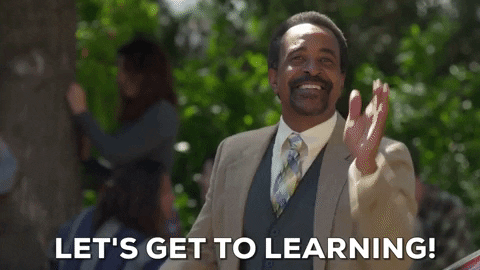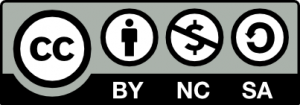Introduction to the Open IMC Guide
“Never limit yourself because of others’ limited imagination; never limit others because of your own limited imagination.”
— Dr. Mae Jemison

Guiding Statement
The Open IMC project is a collection of individual and group work used to design and publish an open-licensed IMC guide online in order to assist future Non-Profit Organizations. The Open IMC project is not a sponsored product of any of the websites and resources that we’ve included in the guide.
Summary
We have prepared an open Integrated Marketing Communications (IMC) guide for small to medium not-for-profit organizations. It contains these 3 components: strategic insights with audience analysis, graphic standards, along with guidelines and mockups, and the overall IMC plan with additional supplementary information. This resource was created by 34 students, who all have Business and/or Graphic Design backgrounds, as part of a Marketing Course with the objective of creating an online, open guide to help guide non-for-profit organizations through their communication campaign efforts.
Purpose
Ultimately, a successful Open Guide to IMC is one that:
- Provides a framework for IMC that is affordable, accessible, equitable, and inclusive
- Creates a resource that anyone can adapt and use
- Reaches NFP’s, NGO’s, advocates, and activists
- Supports marketing efforts in pursuit of the SDG’s
Methodology
Our Open Guide to IMC was created by thirty-five people. We all contributed_ in building and integrating an IMC guide for NPO by using the great open-source of PressBook. At the end of this project, we developed our own ePortfolios in order to expand and showcase our skills in the work we have done for future employers to see.
Tools and Media
Our Open Guide to IMC was assembled and published as an online open resource. The contents of this open resource take on many forms such as, alt text, infographic, questionnaire, but probably not formulation or lengthy description. The authors used different tools and media that are interactive and ideal for spreading widely. We encouraged users of our Open Guide to IMC to craft their NPO idea by digital tools or platforms, such as (but not limited to) H5P, Canva, or Unsplash.
Creative Mandates
Creative elements that were included in the Open Guide to IMC:
- We provided insights and design materials intended to help define a potential target audience and spectrum of allies.
- We crafted examples of creative briefs to help guide non-profit organizations, and their agency counterparts (if applicable) to navigate their IMC campaigns.
- We produced an entire mocked-up organization (NoHungerBC) as a way to provide relevant examples of design solutions.
- We made infographics and other creative elements using a free resource that we recommended in our guide for complete transparency.
Project Theme
Our collective theme is to come together as a collective regardless of race or colour, and create original and open-source content to share with the universe. With our original and open-source content, we deconstructed the barriers preventing our knowledge from being shared, and constructed a textbook with a passion to share with the people who require the knowledge the most. All aspects of our project connect in some way, however loosely, with this theme, or otherwise radically and respectfully diverge from the theme in a way that inspires awe, surprise, or success.
Ethical and Responsible Usage
All components and content in this Guide should aim to help students to develop an effective IMC campaign for education purposes and never be downloaded and published by individuals or for commercial selling.
Peer-review Process
During this project, we held ourselves accountable to our work by meeting consistently with our team groups and conducting regular reviews of the work we created to ensure it aligned with our guiding purpose. The purpose of conducting these reviews was to meet the short term objectives we had set for ourselves, in order to fulfill our long term goal of creating an accessible and inclusive IMC guide for small to medium-sized not for profit organizations yet to not discourage creative risk-taking and exploration beyond the original scope of what we believed the assignment to be. Because we engaged in this collegial peer review process, we believe our work is uniquely suited to meet the needs of emerging non-profit organizations due to our collective experiences and strengths as a group and we feel proud to publish it for a wider audience.
Sharing Our Work
By publishing our work to sources that all non-profit organizations can reach, we are contributing to the success and sustainability of non-profit organizations. In this way, we can see our work grow and adapt while serving our society, which benefits the deserving communities that non-profit organizations help to thrive.
Our Legacy
Our experience in creating this project has been eye-opening and incredibly rewarding. At first, upon embarking on this journey we felt nervous and were concerned about getting it right in creating a valuable resource, yet excited about challenging ourselves in order to benefit others. Along the way, we learned things we didn’t know before, such as the small changes that nonprofits can make to traditional marketing to better benefit them, and the importance of unlearning many traditional marketing cliches and examples that we have been taught. As we bring this project to a close we hope future students will benefit from and feel inspired to look to open-source texts and marketing instructors will consider continuing to implement them in the future.

Attribution
This page contains material taken from:
Stommel, J. (2019). DGST 395: Final Digital Project. Retrieved from https://docs.google.com/document/d/1HODPozxcWWShYqWET_nrc2ub1sjwnpStiShtohk6S3k/edit?usp=sharing
Stommel, J. (2019). DGST 395: Final Digital Project (sample). Retrieved from https://docs.google.com/document/d/12Swg3i3TFg1w0povbuXsvLjvhBGY53HwcWTYI2Az798/edit?usp=sharing

This work is licensed under a Creative Commons Attribution-NonCommercial-ShareAlike 4.0 International License
by Andrea E. Niosi
To cite this work ON THIS PAGE:
MRKT 4201 | IMC Guide Introduction by Andrea E. Niosi is licensed under a Creative Commons Attribution-NonCommercial-ShareAlike 4.0 International License.
Based on a work at https://docs.google.com/document/d/1_7qXD4hQ_T-DfPLzZBcAEtqL4gA_48_jMR7paq-Nxa4/edit?usp=sharing

